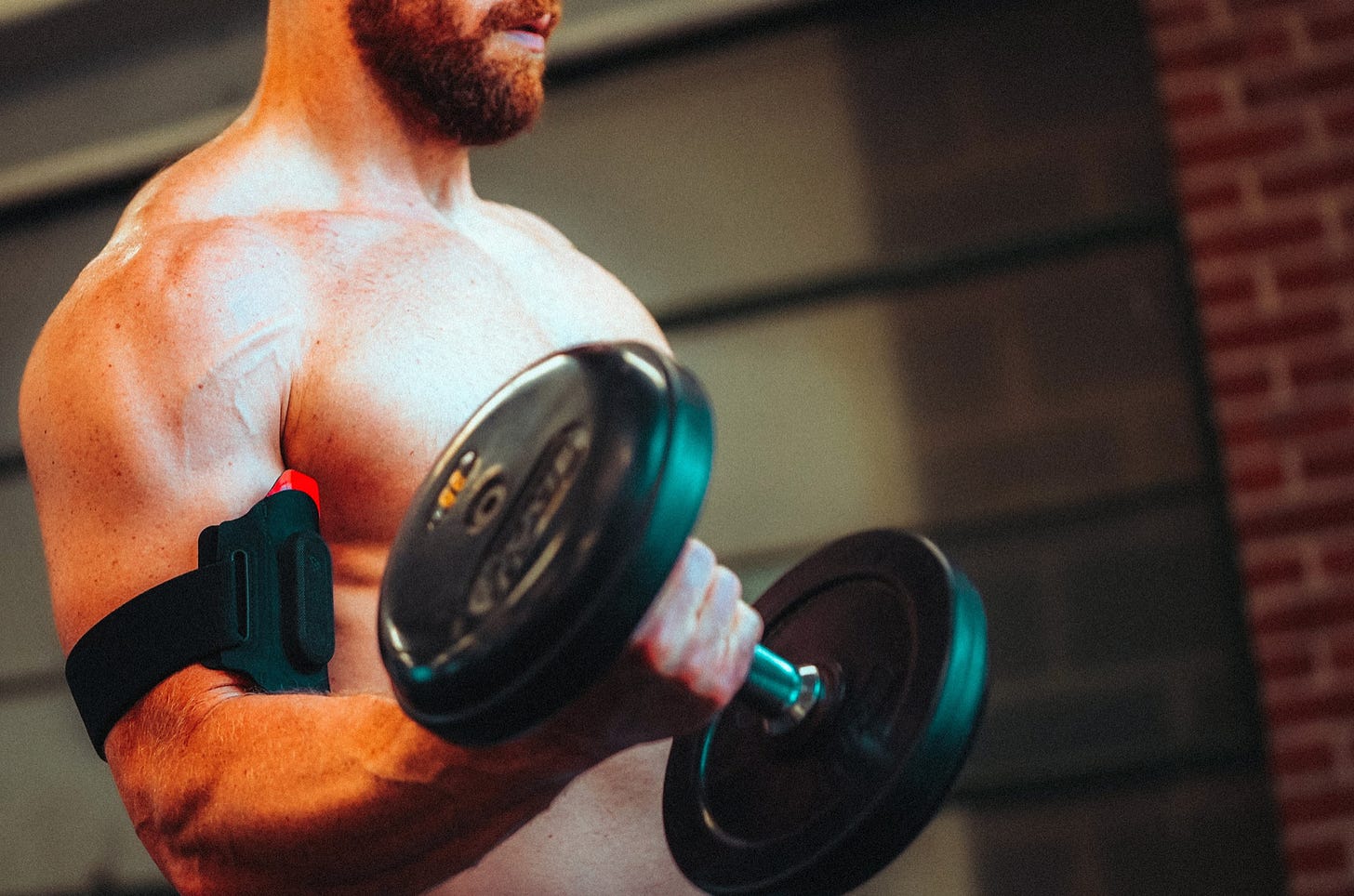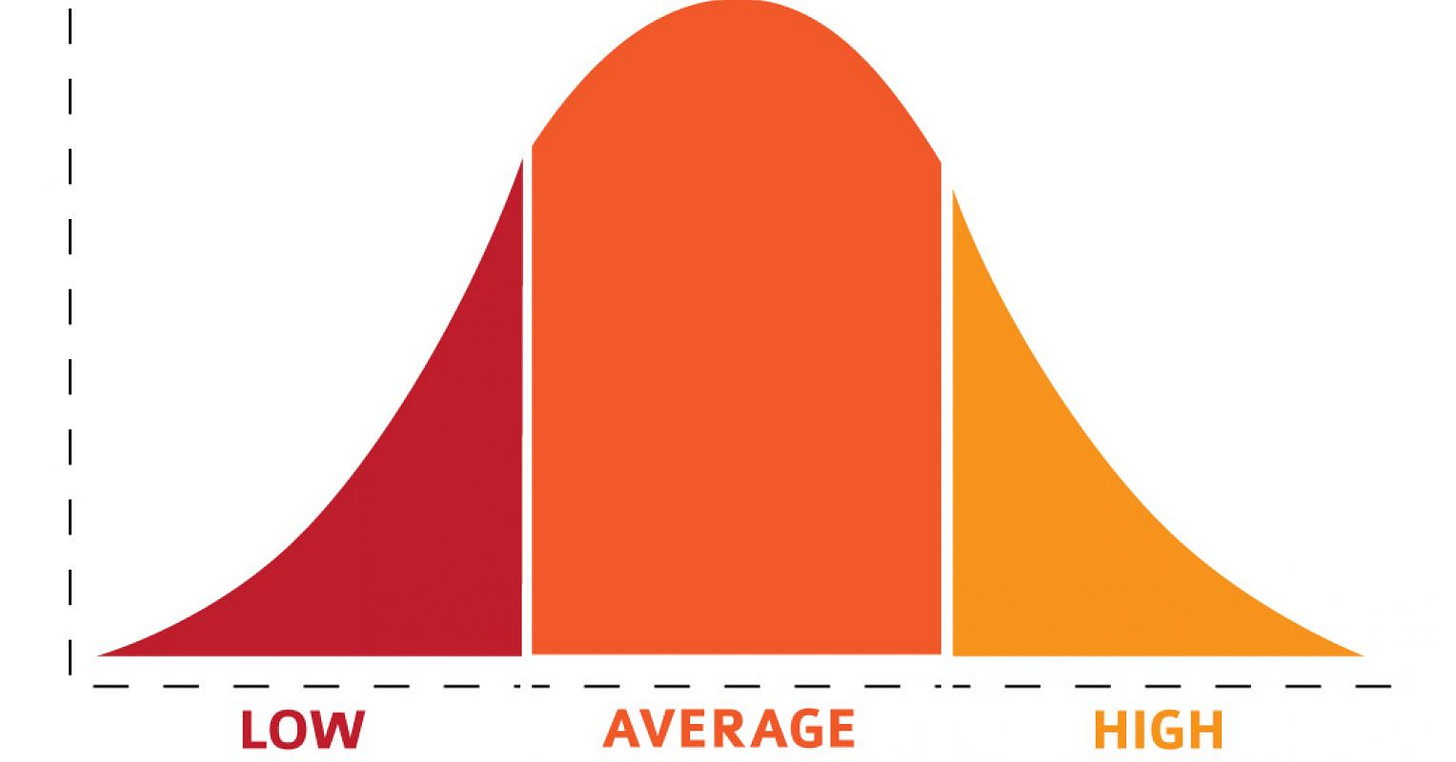Get Stronger Faster With Auto-Regulated Strength Training
An ask: If you liked this piece, I’d be grateful if you’d consider tapping the “heart” ❤️ in the header above. It helps me understand which pieces you like most and supports this newsletter’s growth. Thank you!
🏋 Get Stronger Faster With Auto-Regulated Strength Training
Imagine we performed an experiment where we took one hundred athletes and trained them all in the exact same manner for one year. What do you predict would happen at the end of the experiment when we checked in on their results?
If the program was well constructed we’d probably see a bell curve distribution with the majority of individuals getting good results and then fifteen to twenty athletes getting either excellent results or doing very poorly.
In the training community, we tend to act as though everyone is capable of looking, performing, and adapting the same. This is the premise on which every training plan sold in mass, and most training books, are based. It’s the premise upon which Prepillin’s Table was derived, and which exercise physiology studies are built upon when they try to isolate a single variable and neglect the fact that the participants in the study aren’t homogenized.
The truth is that we would all differ even if we trained the same, ate the same, and lived in the exact same environment. These differences are the result of the differences among our pasts, “differences that assert themselves from just beneath the surface like some sea monster faintly visible in the dim light of our collective minds” as Robb Dunn eloquently stated in his book The Wild Life Of Our Bodies.
The models depicted in the strength and conditioning literature are based on statistical averages and not on an individual’s body, which is why the standard textbook protocols work for some and not others. A common fault among coaches is that they try to make athletes fit their rigid models and prescribe these protocols that should in theory elicit a given adaptation.
While this may work for those whose physiologies are congruent with their protocols, it will yield subpar results for others. Those that don’t fit this profile may simply assume they don’t have the genetics to elicit a given adaptation, like muscular hypertrophy, for example, when in reality they just need to take a different path to get there. After all, we cannot fight mother nature. Instead we need to maximize an athlete’s ability and augment what they already possess. This relates to a concept in research called response heterogeneity, which can be defined as important individual differences in the physiological response to the same intervention that cannot be attributed to random within-subject variability.
A great example of this was observed in a study conducted by Felipe Damas and colleagues titled, Individual Muscle Hypertrophy and Strength Responses to High vs. Low Resistance Training Frequencies . In this study the researchers had a population of participants train one leg with high frequency (5x/week) and the other leg with low frequency (2x/week).
The researchers measured the participants muscle cross sectional area and one repetition maxes before and after an eight week training periods, and the results were as follows: for muscle hypertrophy, six individuals (31.6% of the sample) responded better from high frequency training, seven individuals (36.8% of the sample) responded better from low frequency training, and the other six individuals (31.6% of the sample) showed no difference in the hypertrophic responses between training frequencies.
Keep reading with a 7-day free trial
Subscribe to On Human Performance by Evan Peikon to keep reading this post and get 7 days of free access to the full post archives.




